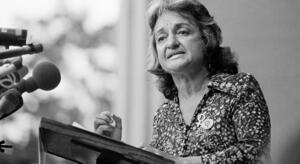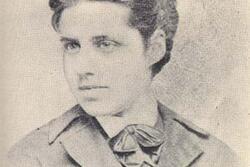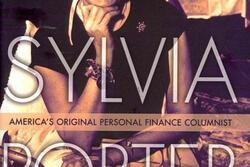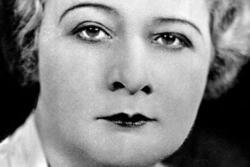"The Problem That Has No Name," Then and Now
It is no mistake that when people think of the 1950s, a very specific image comes to mind. A slim white woman wears her kitten heels as she holds a baby on her hip with one hand and pushes a vacuum with the other. That same slim white woman flashes a smile while placing a cooked meal in front of her husband and children, family programming playing on the television. This ideal housewife was present everywhere, dominating women’s magazines, advertisements, TV shows, movies, and literature. Women were supposed to be simple, kind, doting, dutiful, and, of course, selfless.
Betty Friedan attempted to become one of these women but would end up being best known as the mother of second-wave feminism. Friedan was born in 1921 to a Jewish family in Peoria, Illinois. She attended Smith College where she graduated with honors and received a fellowship to continue her studies at UC Berkeley. She attended for one year before being pressured by her boyfriend to move to New York and take a reporting job. In 1947, she married that boyfriend and gave birth to her first child. In 1953 she gave birth to her second child, which led her to withdraw from her profession, instead writing for a middle class women’s magazines.
In 1957, at a Smith reunion, Friedan distributed a survey to her class, then mostly housewives, asking about their lifestyle and how happy they were. She found that though all of them had “the dream” of ticky-tacky suburban homes, husbands, and children, all of the women also showed similar feelings of anxiety, depression, and boredom. Modern housewives found their daily routine unfulfilling and unworthy of the education and independence they acquired in college and in their working years. Friedan would later call this discontentment “the problem that has no name.” Surprised by her findings, she decided to further research the phenomenon.
Friedan’s years of research were turned into the book The Feminine Mystique. The book faced years in publishing purgatory due to its provocative nature. Finally, in 1964, her book was published to much controversy and huge popularity. Her writing introduced readers to the idea of the subservient female—the “feminine mystique”—and explored how this concept was reinforced by the education system, women’s magazines, advertisements, and psychology. She identified it as a crippling force that led college educated housewives like herself away from their own desires in favor of wifely duty. Her book sparked the second-wave feminist movement that would define the following decades. Friedan refused to accept that women were less than equal to men and should be in any way limited in achieving the same thing men can. She started NOW, which advocated for women’s equality in politics and the workplace. She was also at the forefront of the push for abortion rights, the Equal Pay Amendment, and paid maternity leave.
In the 1970s, Friedan became alienated from the movement she had begun. She feared the rise of more radical wings of feminism would create a new feminine mystique, this time pressuring women to stay outside the home. Today, there is a new feminine mystique, though not the kind Friedan feared. I see a feminine mystique of the kind defined by Gillian Flynn in her novel Gone Girl as the “cool girl”, that girl that can stuff her face with food and like football but still be hot. Or how about the “manic pixie dream girl?” She is quirky, cute, sexless and only sees the magical possibilities in the world. It seems as though Friedan was right in one way: we’ve adapted a new kind of feminine mystique that tries to package women as archetypes rather than individuals, but this time it’s not affecting middle-aged housewives. In our attempt to be desirable to men, young women are now pressured in to being unconventional and unique; “not like other girls.”
Whereas women in the 1950s were pigeonholed into being overtly feminine, society now regards femininity as anti-intellectual fluff not worthy of being taken seriously. I wonder what Betty Friedan would say to these new paradigms of female idealism. Given her adamant fight for women to be their own self agents, I think if she were around today she would be with me, fighting for women to be defined not as how they relate to men but as people in themselves.
This piece was written as part of JWA’s Rising Voices Fellowship.






